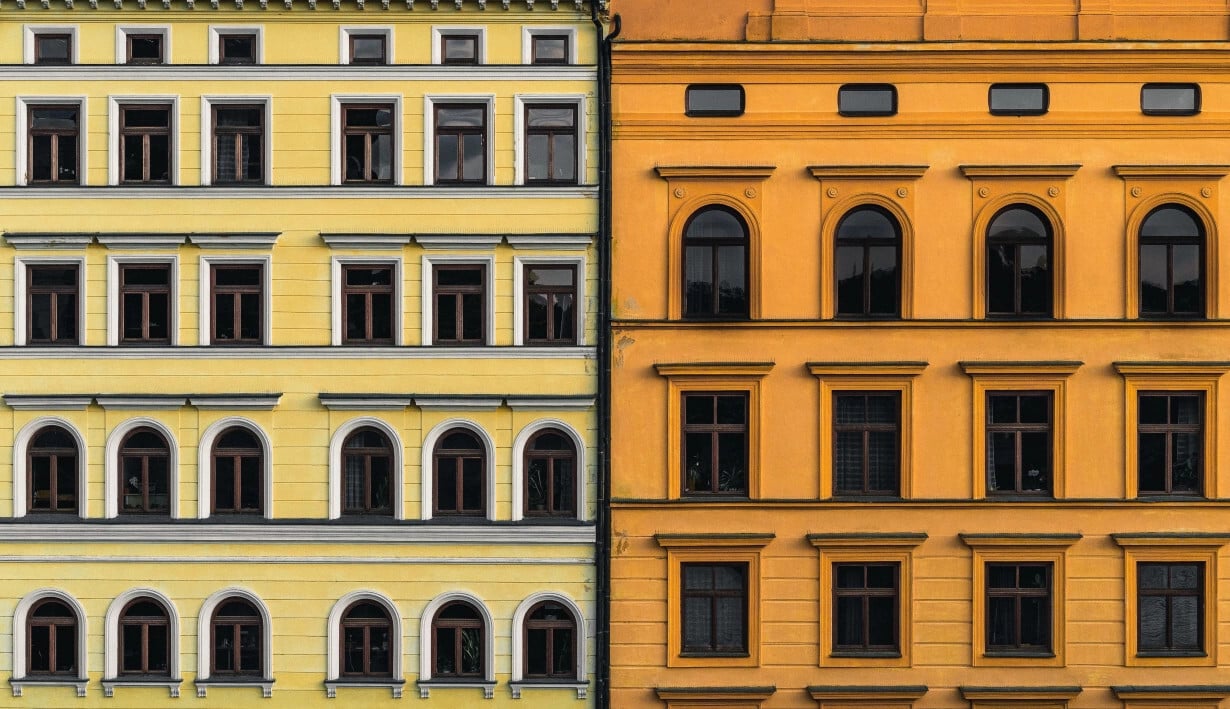For several years now, the residential real estate market has been talking about how insufficient supply and high demand are pushing up apartment sales prices. Now the same situation is spilling over into the rental market. For example, in Prague, the offer of vacant flats for rent is the smallest in the last eight years. And prices react logically to that. In large cities, they are growing by more than eighteen percent year on year. The reason is clear: there has long been no interest in rental housing as it is today.
During the years 2020 and 2021, more than fifteen thousand housing units were available in Prague. Since then, however, the supply of rental housing has fallen by 69 percent and is now well below pre-pandemic levels, during which it was heavily subsidized by apartments originally intended for short-term rent, typically through the Airbnb platform.
“There are currently only 4,700 active advertisements. We expect the situation to worsen during the holidays, when people generally move more,” says Viktor Mejzlík, co-founder of the GarantovanyNajem.cz service, noting that in 2014 there were about seven thousand apartments for rent.
Michal Pich from the real estate portal RealityČechy.cz has a similar experience. “There are currently 2651 apartments for rent on our portal. In May 2021, it was forty percent more. The offer thus decreased significantly year-on-year. This is the largest year-on-year decline in the last five years, “he concludes.
Real estate agencies also saw a sharp increase in demand for rents. According to RE / MAX, for example, the rental market grew by 20 percent in the first quarter compared to the first quarter of the previous year.
–
Higher demand is thus beginning to affect prices as well. Not only did they call for a roughly two-year pandemic decline, but somewhere they were already above the pre-ancestral level.
Monthly rental prices per square meter increased year on year in all regional cities except Jihlava and Olomouc. The national average price growth thus climbed to 9.3 percent. And as we have already mentioned, in large cities such as Prague and Brno, prices have increased by more than eighteen percent, according to data from the Realitymix.cz portal.
There is a combination of several reasons for the rapid increase in demand for rental housing and the associated rise in prices.
The first is the prices on the housing market, where records were broken in the first quarter of this year. According to Bezrealitka’s service, the average price of an older apartment in the Czech Republic for the first time reached over ninety thousand crowns per meter. And specifically, the Prague market reached the historical milestone of 120,000 crowns per meter for older flats for the first time – the value at which flats were sold in new buildings at the end of 2020.
The trend was the same for new flats. In the first quarter, the price of a new apartment in Prague averaged around 150,000 per meter. And for apartments, which are currently being put by developers to the market, the price is even at 167 thousand per square meter.
However, increasingly unavailable mortgages are also adding to the rise in apartment prices, with the average mortgage rate rising to 5.33 percent, according to the latest published Fincentrum Hypoindex. Mortgages have risen by more than 2.8 percentage points since the central bank began raising key interest rates last June.
“The monthly payment of the average three-and-a-half-million mortgage thus increased by 5,500 crowns during this period. In combination with the old and stricter rules for assessing mortgage applicants valid since April this year, this means that mortgages have become unavailable for the middle class as well, ”says the owner of the development company Ekospol Evžen Korec.
In addition, fears of rising mortgages forced Czechs to buy their own housing even before loans became unavailable to them. This brought about a tenth of more flats sold than in the previous period and, logically, also room for further price increases.
It was the impossibility of obtaining a mortgage that would cover the financing of the apartment at the current high prices, which forced people to reorient themselves to the rental market. In addition, the refugee wave due to the war in Ukraine is putting pressure on him. “300,000 people from Ukraine came to the Czech Republic and most of them may want to or will have to stay there. The demand for leases is therefore extreme, ”says Jan Hrubý, CEO of RE / MAX.
What will happen next in the rental market? According to experts, rents will continue to grow. “We expect growth in rental prices to continue in the coming years. We assume that the increase in rents will copy inflation, “says Pich.
Statistical data on the frequency of migration of Czechs show that about 600 to 650 households a day go to rent or change the rental apartment for another. “It’s not such a big number. After all, eighty percent of Czechs still live on their own. But now we can talk about what would spread in three years will be concentrated in one year. And almost 2,000 people will be looking for housing every day, ”points out Jan Škrabánek, CEO of Bezrealitka.
Further increase in rent can also be expected because sufficient housing is also needed for rental housing. And in Prague and other cities, there are still not as many of them as the tense market requires. However, urban construction, for example, could help in the future. In the coming years, Prague wants to supplement the housing offer by up to eight thousand new flats for twenty-five billion.
In addition, according to older OECD data, the Czechia has the largest number of potentially residential properties per capita in Europe – as many as 603 per thousand inhabitants. That is, those that are not immediately available, but after more or less major reconstructions can be used for housing.
“There are about 650,000 flats that can be used almost immediately and are marked as empty. So the greater the demand and willingness to pay for rental housing, the more sense it will make to return these properties to the market, ”explains Škrabánek.
With the more developed rental market, the Czechia could approach Western countries in the future, where owner-occupied housing does not have such a position. While in Prague in 2018, according to an analysis by the Prague City Hall, only 32 percent of people lived in rent, for example, in Vienna, 78 percent of the city’s population lived in rent.
However, until the supply of rental housing expands, the situation we know from the primary market will be repeated. Demand supply will not be enough. Rents have been rising steadily in Prague since mid-2020 and it can be assumed that the pace will accelerate. However, even faster than in the capital or Brno, rents could grow in the regions.
“Even with regard to the ongoing war, I would describe the market situation as calm before the tenure storm. And if someone is considering a lease, they should do so as soon as possible before the changes hit the market in full force, “adds Škrabánek.
Although demand is already growing, according to him, we are still at the beginning of rapid development. In addition, strong demand will not be concentrated only on large cities, but will be constant throughout the Czech Republic, which may mean a complete novelty for some regions.
With the rise in rental prices and their jump above the pre-pandemic level, the question also arises as to whether it is worthwhile to invest in flats with the prospect that the investment will return to rent. However, high real estate prices do not yet indicate this, and from an investor’s point of view, real estate makes sense rather as a relatively safe and long-term deposit of money.
“In order to cover the current mortgage for an investment apartment, such as a 40-meter 1 + kk, in Prague, for example, rents would have to double. This is one of the reasons why, for example, the arrival of micro-apartments in the capital is becoming more and more declining in the hands of one of the private investors, ”adds the head of Bezrealitka.
–


